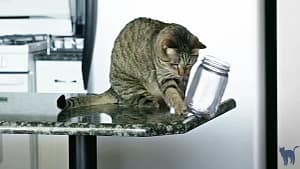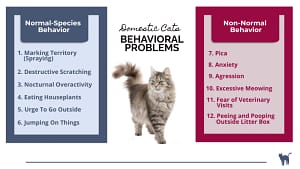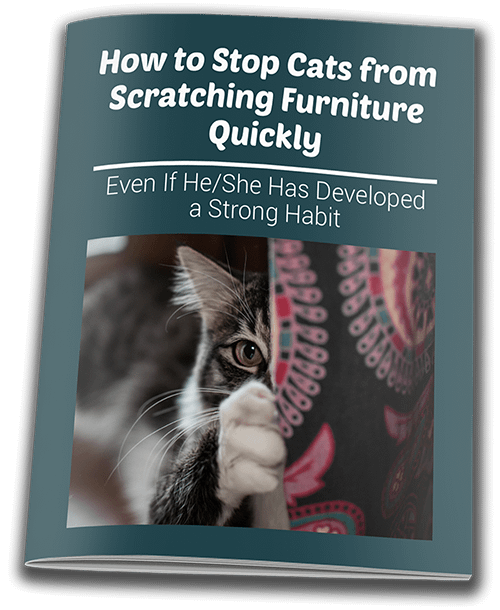Your cat is behaving badly because it’s unhappy or feels unsatisfied in some way. Cats have conduct issues as a result of:
- Caregivers failing to consider the cat’s needs,
- Housing conditions are poor or constantly changing,
- Owners have unrealistic expectations about their pets,
- Too few interactions between the owner and the cat.
Other reasons could be:
- Health issues (pain or illness);
- Traumas the cat suffered before adopting him;
- Intact cats follow their instinctual behavior.
Are you wondering “Why is my cat so badly behaved”?
Well, just about all cats misbehave at some point in their lives. Yet, sometimes our perceptions of ‘bad’ behavior are based on speculation of why cats act the way they do.
In a single article, it’s impossible to document the specific causes and details of all cats’ behavior problems.
Why?
Because each situation is different and depends on the circumstances of each cat.
However, some common factors come up when it comes to inappropriate behavior.
In this article, I will break down six factors that influence cat behavior. Knowing them is the first step in developing an effective strategy to change your cat’s “bad behavior”.
Let’s dive right in.
Why Is My Cat So Badly Behaved? (long answer)
Your cat is behaving badly because it’s unhappy or unsatisfied in some way. Cat behavioral problems, according to D.C. Dennis Turner, a well-known cat researcher, are caused by:
- Lack of consideration of the cat’s needs,
- Poor or changing housing conditions,
- Owner’s unrealistic expectations, or
- Inadequate interactions between the owner and the cat.
It’s worth noting that all four points apply to people, not cats. Besides, a study conducted by Dr. Maria R. C. De Godoy in 2016 sheds some light on the possible causes of “unwanted cat behavior.” They look at many factors that could affect indoor cats’ wellbeing.
Those factors are:
- # 1 Space Conditions
- # 2 Housing Conditions, and
- # 3 Social Setting.
Other factors to consider, not covered in the study are:
- # 4 Medical condition;
- # 5 Emotional traumas;
- # 6 Hormonal fluctuations in unaltered cats.
Let’s take a closer look at each factor.
# 1 Space Conditions
It refers to the cat’s housing space (room, building, or barn). The factors to consider are the following:
- Room temperature,
- Smells, and
- Sounds.

Room Temperature
The room’s temperature has a significant impact on cats. Cats unable to regulate their temperature will most likely feel uneasy throughout the day.
Did you know that the ideal temperature for cats is between 86 – 100 °F (30-38 C°)? Yet most cat housing areas in homes are colder.
Thus, thermal discomfort may be a common experience for many cats, despite being an issue that is easy to fix.
Allow your cat to thermoregulate himself.
Heated bedding, sleeping areas, boxes, and heating elements like SnuggleSafe® are all great ideas.

Odors
In the wild, almost all mammals, including cats, rely on olfactory cues more than humans do. Unpleasant odors can be a source of chronic stress for indoor cats.
Candles, essential oils, and Cannella are just a few examples of smells that cats dislike.
In this article “What Scents Do Cats Not Like? [& Why You Should Be Aware of Them] you’ll discover what smells and scents you must eliminate from your house if you want a happier and more relaxed cat.
Sound
Another factor to consider is sound frequency and intensity. Cats have better hearing abilities than humans, which makes them more sensitive.
The sound intensity in wild cats habitats (savannah and forest) goes from 20 to 40 decibels. Whereas it regularly exceeds 100 decibels in high traffic places.
Consider the following scenario: you are in a restaurant spending some time with your friends. The place is nice and you guys are talking a lot. Suddenly the music becomes too loud and you can’t hear each other. Your mood shifts dramatically, and you become upset, right? Well, the goes for your cat.
Noise pollution can harm your cat’s well-being. Experts recommended noise levels of around 60 decibels (quiet conversation level) for your cat. So, try having a quiet and calm place where your cat can relax.
# 2 Housing Conditions
The characteristics of the cat’s territory can be a source of stress or enrichment for your cat. These characteristics are the presentation, the availability, and the type of space where the cat lives. Let’s take a look at each one in detail.
Housing conditions include:
- Floor space,
- Food presentation,
- Litter box facilities and
- Freedom to express species-typical behaviors.

Floor Space
The quantity and quality of space provided to cats are very important. Often, cats’ living habitats are reduced in both quantity and quality of space. Especially when compared to the options available to their wild or free-roaming cats.
Oddly enough, recent studies have indicated that space quality is more relevant to the cat than space amount.
In other words, it is important to provide appropriate furniture that allows cats to engage in their natural behavior. This freedom of movement helps them feel more motivated.
Daily exercise periods outside can be a great solution too.
Doing requires you to leash train your cat though.

Food Presentation
Another key element is the food’s type, presentation, and ease of access. Most caregivers provide food in the form of a formulated, uniform, and consistent diet. Always in the same location.
Wild cats spend a lot of time and energy thinking up food-gathering strategies. Domestic cats, on the other hand, feel bored and listless. This is why it is important to pay attention to how cats are fed.
Regardless of whether they live as pets alone or in groups, food presentation becomes an important aspect of their well-being.
The solution?
Use interactive puzzle feeders!
They provide domestic cats with mental and physical stimulation, so they stop feeling bored and start exercising.

Litter Box Facilities
This is a crucial element in the cat’s life too. An incorrect approach can cause quite a few headaches for you. As we can all agree, nothing is more disgusting than the smell of cat urine.
The best way to deal with these issues is to avoid them in the first place.
But how do you do that?
Well, it’s easy… make your cat’s litter boxes as cat-friendly as possible.
Here’s how:
- Choose a large litter box,
- Choose an uncovered litter box,
- Have more than one litter box,
- Keep the litter box clean.
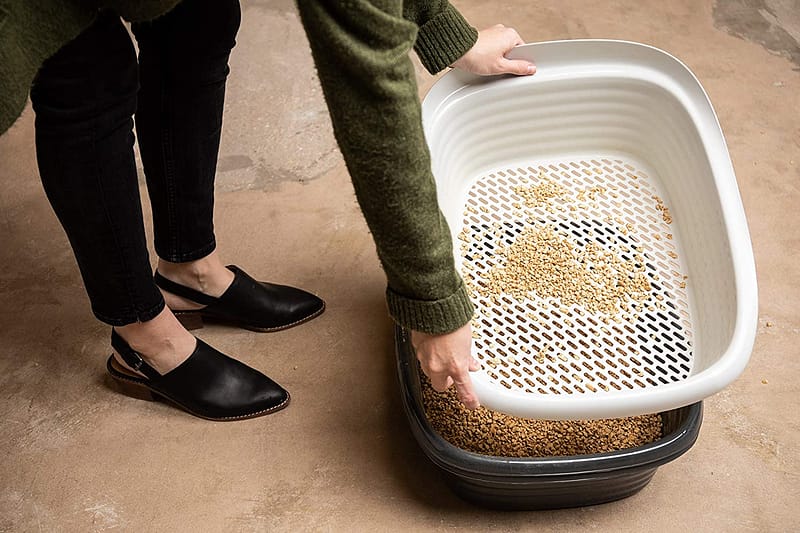
By following those simple but powerful tips, you will have no toilet-related issues with your cat.
However, if you are experiencing some peeing problems with your cat, this book could help you get rid of this problem forever. Check out my complete review of “Cat Spraying No more” here.
Expression of Species-Typical Behaviors
In this sense, you have to consider the following:
Cats like to be left alone sometimes. You must allow your cats to isolate themselves from other cats and people. This offers them a sense of security.
You can provide something as simple as a cardboard box. Cats love them, and now you know why.

Cats prefer to check their surroundings from high vantage points. That’s why they tend to climb on your furniture. To keep your cats happy and prevent them from climbing onto kitchen counters, give them:
- Climbing frames,
- Hammocks,
- Platforms,
- Raised walkways,
- Shelves, and/or
- Window seats.

Cats regularly mark their territory. To allow the expression of this behavior, you should provide your cat with an appropriate object.
A tall scratching post is a perfect solution as it lets him leave visual and pheromone marks.
It also aids in the health of his claws and stretching.

Remember, you can never stop instinctual behavior from your cat. Rather offer them good areas, so they can freely express themselves.
Want to dive deeper into scratching behavior problems? Then start with these 3 articles:
# 3 Social Settings

In a recent study conducted on big felines, researchers discovered some interesting things. The most remarkable one is that cats feel better when having interactions with humans.
Felines with a trusting relationship with their caregivers were less aggressive, showed fewer levels of stress, and appeared happier.
Another study proved how cats have higher chances of developing behavioral problems when their environment lacks enough enrichment.
Particularly in the case of interactive enrichment (e.g., playing with owners) vs. static enrichment (e.g., cat toys like stuffed mice).
The bottom line: the quality of human-cat interactions matters a lot for cats.
According to behavioral expert Pamela Johnson Bennett, the best way to interact with your cat is to play with it. Playtime can help prevent behavioral problems as well as relieve boredom and stress. It will also help you strengthen your bond with your cat.
REMEMBER: The right approach to interacting with cats is to show them the roadmap. That is, instead of using punishment, use positive reinforcement. By providing preferred foods and enjoyable activities, you can influence your cat’s behavior.
# 4 Medical Condition
A cat with medical issues may experience aches and discomfort. Those contributing to a cat’s misbehavior include:
- Pain,
- Epilepsy,
- Arthritis,
- Infections,
- Abscesses,
- Dental disease,
- Hyperthyroidism,
- Urinary tract issues,
- Cognitive dysfunction,
- Gastrointestinal issues,
- Dermatological problems.

The list, as you can see, is quite long. So, if your cat is acting in a way he has never done before, take him to the veterinarian for a general physical examination.
Keep in mind that cats are masters at hiding pain. It’s an adaptive response that allows them to avoid getting hunted in the wild. So often, what seems to be out of the blue “bad behavior” is actually a medical problem.
The most appropriate approach is to rule out health issues first before acting on any strategy.
# 5 Emotional Traumas
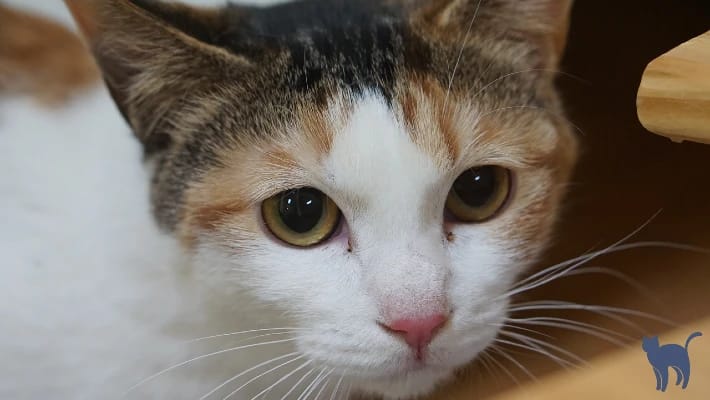
Cats, like humans, can experience emotional trauma. This could be the result of a single incident, event, or disease. In other cases, it is the outcome of injury they experienced when they were younger.
This can lead to different emotional problems in cats, such as anxiety, depression, and even post-traumatic stress disorder (PTSD).
Home abuse and neglect are two of the most common examples. However, even being hit by a vehicle can cause long-term discomfort.
The following are just a few of the circumstances that can lead to these deep-seated emotional problems:
- A previous owner’s abuse and/or abandonment
- Hurricanes and thunderstorms;
- Fireworks celebrations;
- Car accidents;
- Cat and dog fights;
- Improper socialization and early exposure to “fear” stimuli as a kitten.
Since cats can’t tell us what they’ve been through in the past, it’s critical to recognize the signs.
The “bad behaviors” listed below may relate to a trauma your cat has experienced:
- Separation anxiety;
- Aggressive behavior;
- Destructive scratching;
- Excessive meowing;
- Nocturnal overactivity,
- Urinating or defecating outside the litterbox;
All these behaviors can be the result of a negative experience. It’s critical to support your cat if you notice signs that he or she is suffering from emotional shock.
By comforting him, you can reduce the chances that he will develop bad habits.
Here are some ideas for how you can help him:
- Calm your cat with catnip or Feliway products,
- Provide plenty of hiding places;
- Play with your cat.
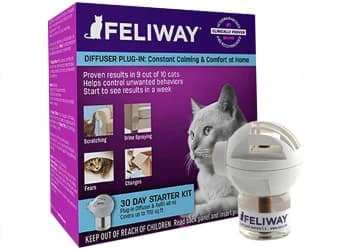
# 6 Hormonal Fluctuations in Unaltered Cats

Hormones control the reproductive cycle of all animals. In cats, males are sexually active throughout the year. In contrast, females come into heat during the spring season and have recurrent cycles.
The hormones level in females in heat varies based on where they are in the estrous cycle. Estrogen, also known as the female hormone, is a major player. It is, in fact, the cause of cats’ strange behaviors during the heat cycle.
Males, too, go through behavioral changes, despite not having hormonal fluctuations as females. Their desire to reproduce takes priority over everything else and the smell of a female cat in heat triggers this shift.
Naturally, a lot of the unaltered behaviors are undesirable for owners.
Here’s a quick list of the most common unwanted behaviors:
Female Cats
- Howling and yowling loudly;
- Desire to go outside in search of a male cat to mate with;
- Irritability and discomfort due to hormone fluctuations;
- Frequent and inappropriate urination to attract males;
- Aggression to other “queens” when competing for male attention;
Male Cats
- Tirelessly searching for a partner;
- Marking the territory outside and inside the house;
- Becoming more aggressive;
- Fighting with any male who crosses his path;
- Escaping from home whenever they can to find a partner;
- Agitation and irritability;
- Nocturnal overactivity.
According to veterinarians and behavioral experts, sterilization is the best option. You can use this procedure to:
- Prevent your pet from getting hurt,
- Stop her from having kittens, and
- Improve your cat’s health.
Sterilization also helps prevent contagious feline diseases. Feline leukemia and immunodeficiency syndrome are the most common. Both are contagious and incurable conditions spread through close contact (saliva and blood).
Conclusion
When we see our cat act differently, we wonder: what is happening? Why is my cat behaving so badly? In this article, we have explored the main causes that motivate “bad behavior” in your feline friend.
We saw which factors have a great influence on their well-being, such as smells, sounds, and ambient temperature. We also covered how space quality is more important than quantity, and how presenting food with puzzles can keep them active.
Another important aspect is the type, location, and cleanliness of the litter box. Last but not least, being unable to mate (when a cat is not sterilized) causes many of his or her unwanted behaviors.
If you don’t take all these factors into account, you could be turning your relationship with your cat into a real nightmare.
Finally, we went through other elements such as insufficient interaction with caregivers, and medical conditions, previous emotional traumas. All these aspects can translate into unwanted behavior. This is why knowing them is critical, both to prevent and to put in place an effective strategy.
Now it’s your turn:
- What do you think?
- Do you know any other factors that you would like to share with us?
Please let me know in the comments below.
The Cat Journey uses only trusted sources, including peer-reviewed studies. This is how we support the tips and information shared in our articles.





